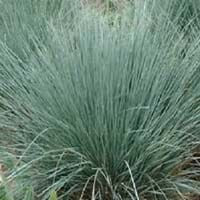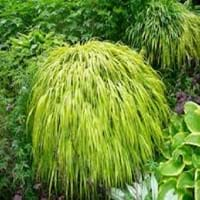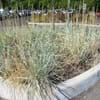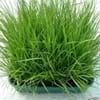Life Span
Perennial
Perennial
Type
Ornamental Grasses and Bamboo
Grass
Origin
Southern Europe, Western Europe, Mediterranean
Japan
Types
Not Available
Not Available
Habitat
Desert, Dry areas, Dry Forest, Rocky areas
meadows, Riverbanks, Wet Woods
USDA Hardiness Zone
4-9
5-9
AHS Heat Zone
9 - 1
9 - 5
Sunset Zone
1a, 1b, 2a, 2b, 3a, 3b, 4, 5, 6, 7, 8, 9, 10, 11, 14, 15, 16, 17, 18, 19, 20, 21, 22, 23, 24
1a, 1b, 2a, 2b, 3a, 3b, 4, 5, 6, 7, 8, 9, 10, 11, 12, 13, 14, 15, 16, 17, 18, 19, 20, 21, 22, 23, 24
Habit
Cushion/Mound-forming
Clump-Forming
Flower Color
Blue Green
Blue Violet
Flower Color Modifier
Bicolor
Bicolor
Fruit Color
Not Available
Purple
Leaf Color in Spring
Blue Green, Silver, Gray
Yellow, Green, Light Green
Leaf Color in Summer
Light Green
Light Green
Leaf Color in Fall
Blue Green, Silver, Gray
Orange, Yellow green, Orange Red
Leaf Color in Winter
Blue Green, Tan, Silver, Gray
Green, Dark Green, Not Available
Leaf Shape
Grass like
Oblovate
Plant Season
Spring, Summer, Fall, Winter
Spring, Summer, Fall
Sunlight
Full Sun
Full Sun, Partial Sun, Partial shade
Type of Soil
Clay, Loam, Sand
Loam
The pH of Soil
Neutral, Alkaline
Acidic, Neutral
Soil Drainage
Well drained
Well drained
Bloom Time
Late Spring, Early Summer
Late Summer, Early Fall, Fall
Tolerances
Salt
Dry soil, Shallow soil
Where to Plant?
Container, Ground
Ground
How to Plant?
Rooted stem cutting, Seedlings, Stem Planting
From Rhizomes
Plant Maintenance
Medium
Medium
Watering Requirements
Average Water Needs, occasional watering once established, Requires regular watering, Requires watering in the growing season
Keep ground moist
In Summer
Lots of watering
Lots of watering
In Spring
Moderate
Consistently
In Winter
Average Water
Adequately
Soil pH
Neutral, Alkaline
Acidic, Neutral
Soil Type
Clay, Loam, Sand
Loam
Soil Drainage Capacity
Well drained
Well drained
Sun Exposure
Full Sun
Full Sun, Partial Sun, Partial shade
Pruning
Cut or pinch the stems, Pinch Tips, Remove damaged leaves, Remove dead branches, Remove dead leaves
Prune grass to maintain level, Prune if you want to improve plant shape
Fertilizers
All-Purpose Liquid Fertilizer
organic fertlizers
Pests and Diseases
Red blotch
Not Available
Plant Tolerance
Salt
Shade areas, Shallow soil, Wet Site
Flower Petal Number
Single
Single
Foliage Texture
Fine
Medium
Foliage Sheen
Matte
Matte
Attracts
Butterflies, Hummingbirds
Ants, Beetles, Caterpillar
Allergy
Asthma, Itchiness, Rash, Rhinitis
allergic conjunctivitis, Asthma, Rash
Aesthetic Uses
Ground Cover
Beautification, Ground Cover
Beauty Benefits
Not Available
Not Available
Environmental Uses
Air purification
Provides ground cover, Shadow Tree
Medicinal Uses
Not Available
Acne, Aging, Laxative
Part of Plant Used
Stem
Leaves
Other Uses
Used as Ornamental plant
Can be made into a herbal tea, Showy Purposes
Used As Indoor Plant
No
Sometimes
Used As Outdoor Plant
Yes
Yes
Garden Design
Container, Edging, Mixed Border, Rock Garden / Wall
Container, Edging, Mixed Border, Rock Garden / Wall, Water Gardens
Botanical Name
HELICTOTRICHON sempervirens
HAKONECHLOA macra 'Aureola'
Common Name
Blue Oat Grass
Golden Japanese Forest Grass, Hakone Grass
In Hindi
ब्लू जई घास
जापानी वन घास
In German
Blau Ährengras
Japanische gras
In French
Bleu Oat Grass
Forêt herbe japonaise
In Spanish
Azul hierba de avena
forestales hierba japonesa
In Greek
Μπλε βρώμης Grass
Ιαπωνικά γρασίδι δάσος
In Portuguese
Azul Aveia
floresta grama japonês
In Polish
Niebieski Owies trawa
Japoński las lato
In Latin
Blue Oat Grass
Forest gramina Italica
Phylum
Magnoliophyta
Angiosperms
Class
Liliopsida
Monocots
Genus
Helictotrichon
Hachanechloa
Clade
Angiosperms, Commelinids, Monocots
Angiosperms
Tribe
Aveneae
Not Available
Subfamily
Pooideae
Arundinariinae
Number of Species
Not Available
Not Available
Season and Care of Blue Oat Grass and Japanese Forest Grass
Season and care of Blue Oat Grass and Japanese Forest Grass is important to know. While considering everything about Blue Oat Grass and Japanese Forest Grass Care, growing season is an essential factor. Blue Oat Grass season is Spring, Summer, Fall and Winter and Japanese Forest Grass season is Spring, Summer, Fall and Winter. The type of soil for Blue Oat Grass is Clay, Loam, Sand and for Japanese Forest Grass is Loam while the PH of soil for Blue Oat Grass is Neutral, Alkaline and for Japanese Forest Grass is Acidic, Neutral.
Blue Oat Grass and Japanese Forest Grass Physical Information
Blue Oat Grass and Japanese Forest Grass physical information is very important for comparison. Blue Oat Grass height is 45.00 cm and width 60.96 cm whereas Japanese Forest Grass height is 30.50 cm and width 30.50 cm. The color specification of Blue Oat Grass and Japanese Forest Grass are as follows:
Blue Oat Grass flower color: Blue Green
Blue Oat Grass leaf color: Blue Green, Silver and Gray
Japanese Forest Grass flower color: Blue Violet
- Japanese Forest Grass leaf color: Yellow, Green and Light Green
Care of Blue Oat Grass and Japanese Forest Grass
Care of Blue Oat Grass and Japanese Forest Grass include pruning, fertilizers, watering etc. Blue Oat Grass pruning is done Cut or pinch the stems, Pinch Tips, Remove damaged leaves, Remove dead branches and Remove dead leaves and Japanese Forest Grass pruning is done Prune grass to maintain level and Prune if you want to improve plant shape. In summer Blue Oat Grass needs Lots of watering and in winter, it needs Average Water. Whereas, in summer Japanese Forest Grass needs Lots of watering and in winter, it needs Adequately.





